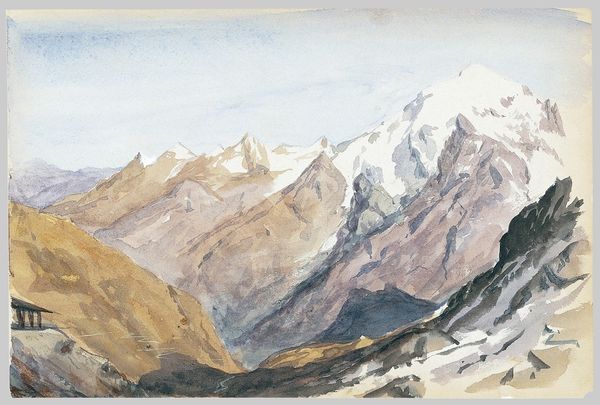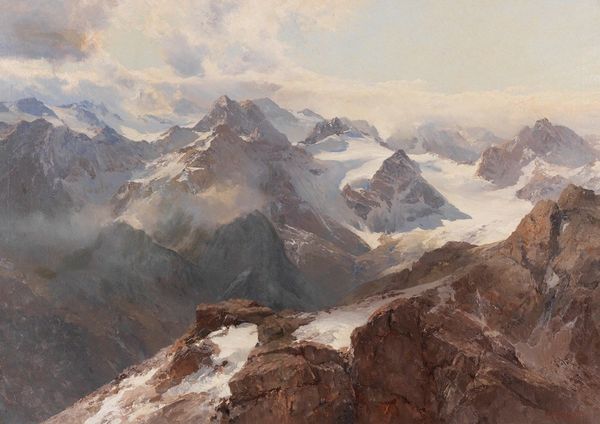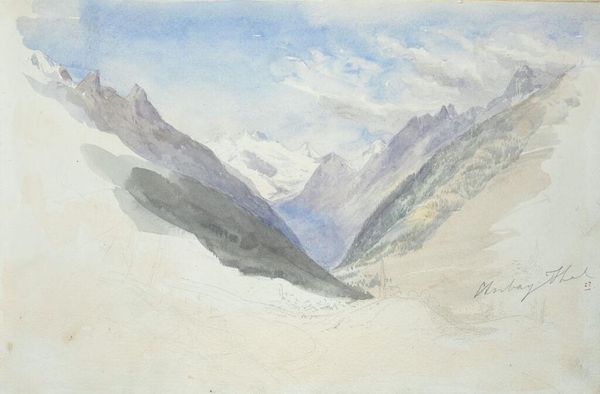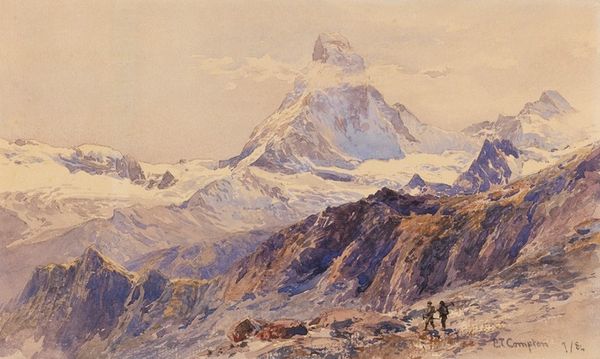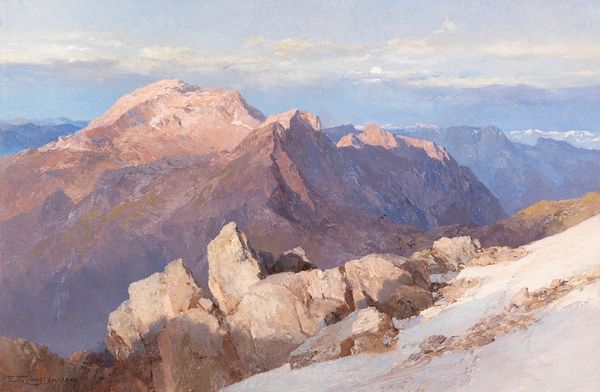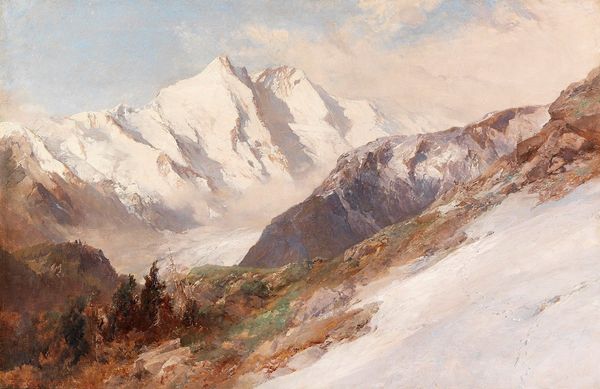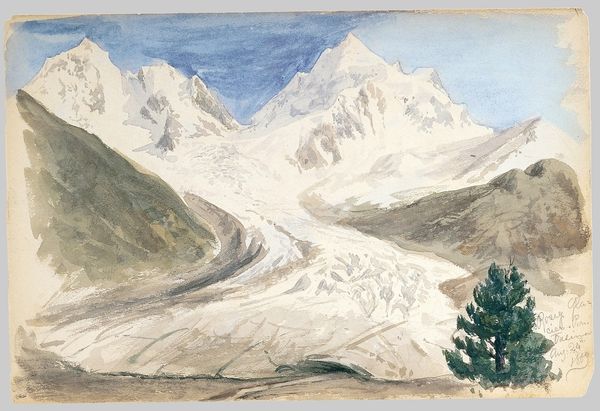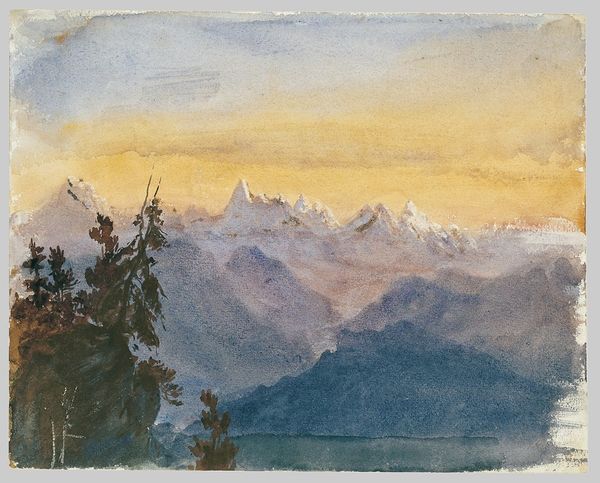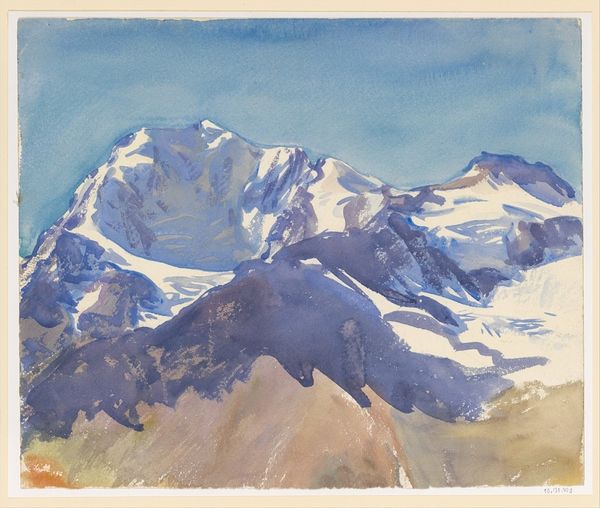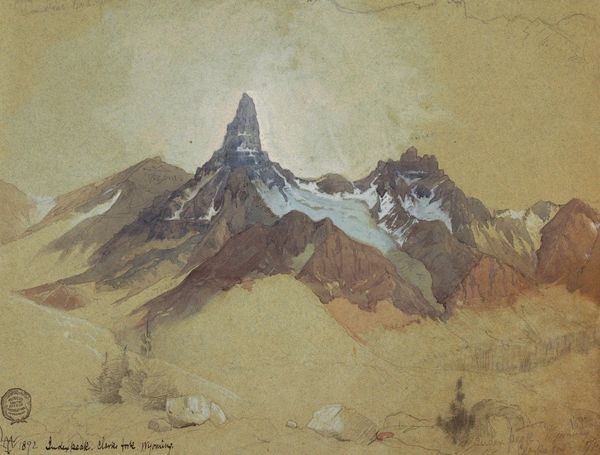
plein-air, watercolor
#
plein-air
#
landscape
#
impressionist landscape
#
oil painting
#
watercolor
#
mountain
#
watercolor
#
realism
Copyright: Public Domain: Artvee
Curator: Looking at "Am Adamello" by Edward Theodore Compton, circa 1920, it strikes me as an intimate depiction of a monumental landscape. What's your first impression? Editor: There's a serene quality to it, almost dreamlike. The watercolour medium lends a soft, ethereal touch to the rugged mountains. It's also quite small, which feels significant when contrasted with its vast subject. Curator: Absolutely. Compton's use of watercolour, traditionally considered a preparatory or amateur medium, becomes the very vehicle for conveying the majesty of the Alps. I'm curious about the shift from oil, often associated with serious landscape painting, to this seemingly lighter touch. It reflects the growing culture of alpinism and accessible art markets, I think. Editor: And that accessibility extends, or perhaps even stems, from the portability of watercolour as a material. This facilitated the plein-air approach, didn’t it? Consider the embodied labour involved in navigating and painting these peaks—a world of difference from studio-bound artists who, historically, had been more esteemed by institutions and critics. The ready availability of manufactured paints must have played a part too, and one can imagine Compton at his craft. Curator: I agree, there's a sense of direct observation here. Though it appears impressionistic, Compton trained in realism, so it seems he has softened the precise detailing typical of more academic styles while emphasizing a fidelity to light. These types of landscape paintings fed directly into ideas around German and Austrian national identity at the time too, I feel. Alpine imagery being deeply romanticized. Editor: It's fascinating how the scale and perceived “lightness” of watercolor intersect with heavyweight themes like national identity. To create the colours for the sublime scenes, mass manufacture had to take place that democratised the medium across art markets, feeding in to a cultural perception and aesthetic that permeates today. What lasting cultural implications can be attributed to artwork such as this, do you think? Curator: Good point. Works like this encouraged mass tourism, particularly through popular reproduction on postcards and advertisements for the Alpine region. So Compton wasn’t just depicting the mountains; he was inadvertently participating in shaping them into tourist destinations and mythologizing national landscapes. Editor: This makes you look at the relationship between landscape, artist and patron a little differently. Perhaps the next time I see a postcard of this region, I will ponder the labour that went in to producing these. Thank you for sharing. Curator: And thank you for highlighting the often-overlooked significance of material conditions in understanding artistic production.
Comments
No comments
Be the first to comment and join the conversation on the ultimate creative platform.

